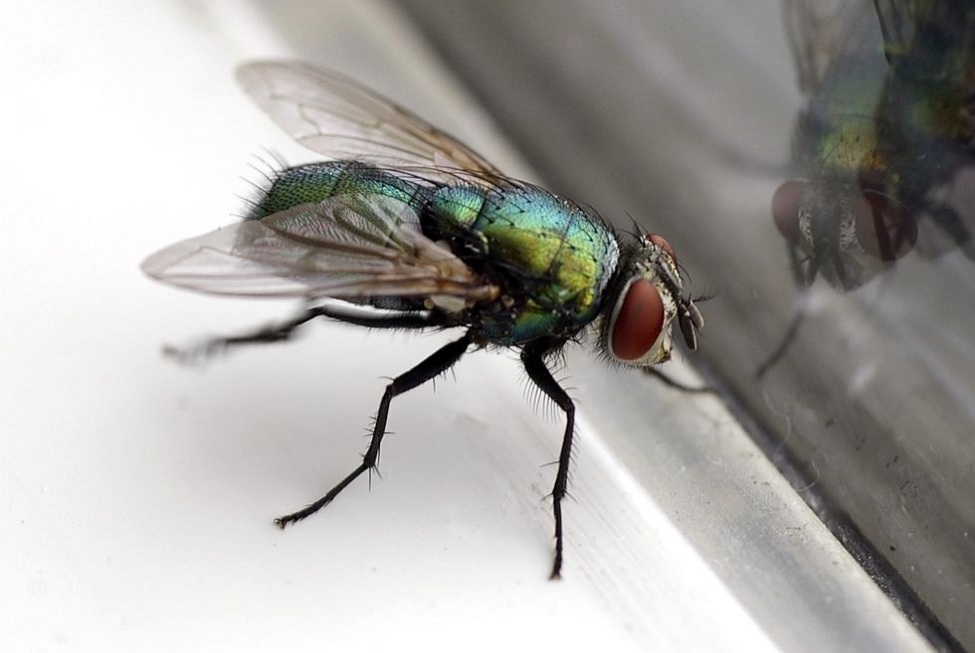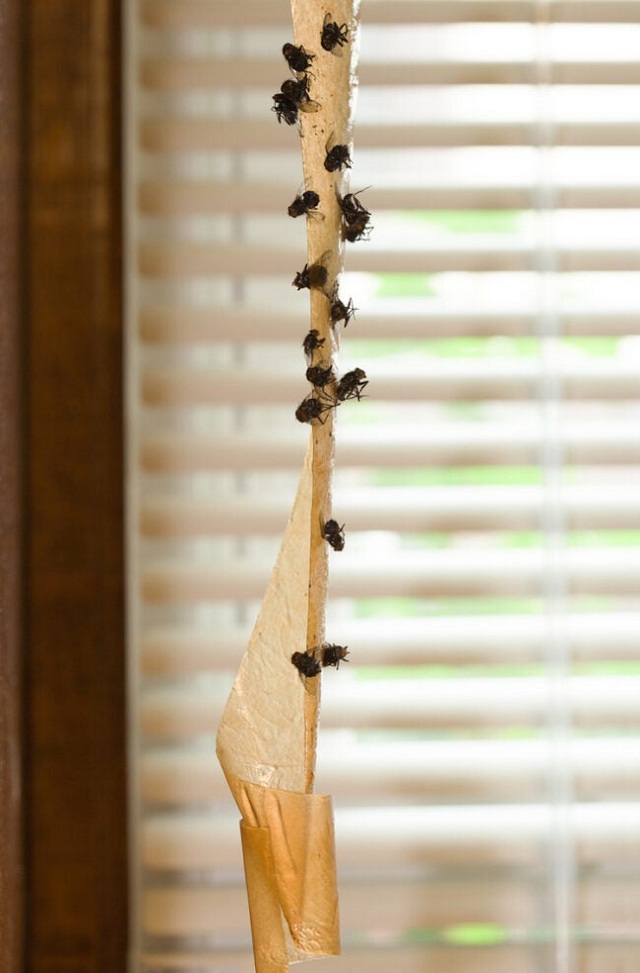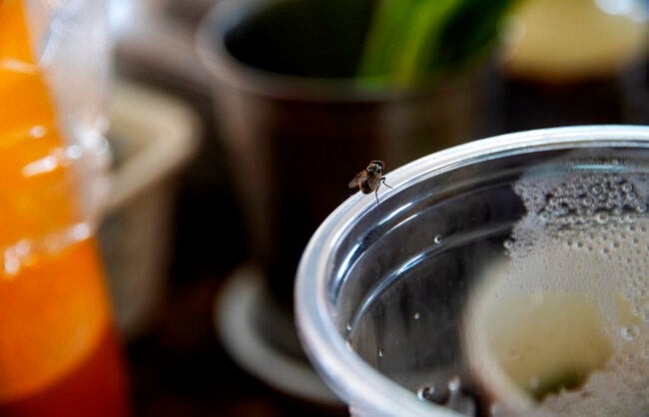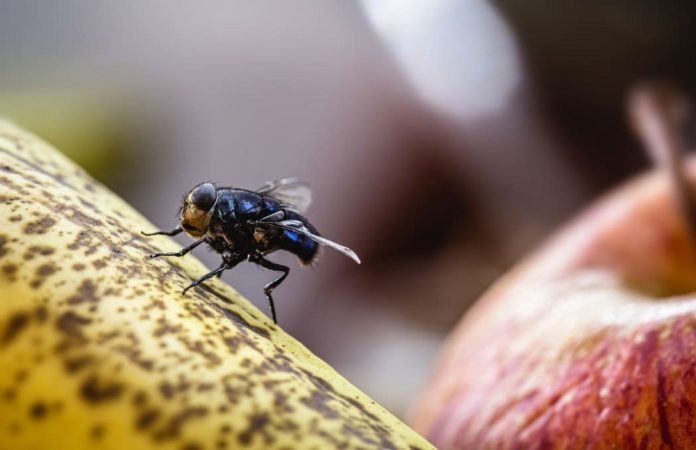Houseflies aren’t just pesky—they can also transmit disease. Using these simple, natural tactics will banish the bugs and keep them out for good.
As warm weather persists, so does an annual nuisance: houseflies. The small black pests that get in your face, buzz in your ear, and land on your food may seem like a harmless (though incessant) irritation, but they’re more than that: Houseflies (officially known as Musca domestica) can carry pathogens and cause illness.
At first you may spy just one fly, but females can lay five to six batches of 100 eggs that hatch in 12 to 24 hours. To avoid an infestation, it’s important to take a multipronged approach—and quickly. Prevent houseflies from becoming a problem by implementing these six strategies.
Ways That Houseflies Can Harm Humans
Houseflies may not deliver a painful bite or sting the way bees, wasps, and horseflies (their bigger cousins) do, so they can seem benign. But given that flies constantly flit back and forth between trash, manure, and decaying matter, it’s easy for them to pick up bacteria that can contaminate your food. Transmission typically occurs when a fly regurgitates on food, or on surfaces that humans touch. This contamination can cause a number of illnesses, including:
- Food poisoning
- Dysentery
- Cholera
- E. coli
- Typhoid fever
- Tuberculosis
- Eye infections

How to Get Rid of Flies Inside the House: 6 Natural, Effective Methods
If you’re experiencing high fly volume in your home, don’t reach for bug spray right out of the gate—there’s plenty you can do to make your environment less hospitable to these insects, and kick out those that have already gotten inside. The more of these tasks you can do right away, the better. Flies multiply quickly!
1. Seal the entrance
It can be hard to keep flies outside when you’ve got a busy household of family members, pets, and visitors coming and going, but this is the best defense for blocking the bugs. Repair any mesh that has been damaged on window and door screens. Caulk around windows to seal gaps and small crevices where flies can enter. Consider adding a quick-closing magnetic screen door to high-traffic portals, such as those leading out to a deck or patio. And of course, don’t leave attached garages or cellar doors open for extended periods.
2. Remove the bait
To make your home less hospitable to flies, remove or minimize the stuff that attracts them. First and foremost, don’t leave any food debris out on counters or tables, especially uncovered items. Fruit—especially apples—and vinegar are particularly alluring to houseflies. Keep countertops clean of crumbs, wash dishes soon after meals rather than leaving them in the sink, and ensure that the door to the dishwasher is firmly closed.
Also be mindful of compost, garbage, and pet food. These also attract flies and can quickly become breeding grounds. Take all compost materials outside immediately. Keep garbage cans covered, and carry the trash out regularly. Clean or completely cover pet bowls between meals, particularly if you give your furry friends wet food.
3. Lure them outside with light
Insects are attracted to light, so if your home is infested with flies, this trick will help usher the bothersome buzzers out: On a bright, sunny day, close the door to the room where flies are present and shut the blinds and drapes, except for one gap that lets in light. Open that window wide to the outside. Flies should naturally be drawn to the light and exit.
4. Swat, suck, stick!
Despite prevention tactics, flies may still find their way inside your home. Combat flies with a good old-fashioned flyswatter or rolled-up newspaper, and the right technique. Good eyesight and sharp reflexes are a plus in the fight against flies. A housefly has almost 360-degree vision, so it’s best to approach from behind and hover just above before making a fast, decisive flick with your weapon. Flies are one of the few insects that are actively affected by colors, so use a flyswatter in a neutral tone for superior stealth.
Another way to outsmart flies is to vacuum them straight out of the air. Hover a few inches behind with the vacuum on to suck them in. Use this method only with vacuum cleaners that have a bag, and dispose of it immediately after foiling the infestation so flies won’t find their way back out and back into your home.
For a passive yet ever-ready fly-catching technique, simply hang quality flypaper. Make your own sticky traps by coating strips of kraft paper with a sticky mixture of water, sugar, and honey or syrup, or purchase ready-made flypaper online. Bugs are bound to bump into it and stick as they buzz about, and are even more apt to do so when trying to escape your active swipes.

5. Build and bait a natural fly trap
Employ a simple all-natural homemade fly trap to lure and imprison unwanted insects. All it takes is a plastic container, plastic wrap, and fly bait (like fruit, vinegar, or apple cider vinegar). Set up the fly trap in a corner to attract and confine flies, then dispose of them when you’ve won the battle. If the DIY route isn’t your style, shop for a fly trap to catch and kill flies.
6. Use houseplants to repel flies
Both potted plants and essential oils can be part of your anti-fly arsenal. An indoor herb garden that includes mint, lavender, and basil are all worthy fly fighters. Set them up on a kitchen windowsill and flies will be less likely to enter. Alternatively, add a few drops of lavender or eucalyptus oil in a spray bottle full of water and mist door and window frames frequently to keep flies at bay.

Using Insecticides and Repellents to Get Rid of Flies
If the methods above fail to solve a fly infestation, you may wish to resort to insecticides and repellents. We recommend that you do this only as a last resort. Products containing permethrin are considered to be among the most effective and widely available for fly control. However, many of these sprays and foggers are designed for outdoor use. If your fly problem is inside the home, shop around for a safe, effective, nontoxic insecticide meant for indoor use. Consider consulting one of the best pest control companies, such as Orkin or Erlich, on how to safetly handle a large infestation.

